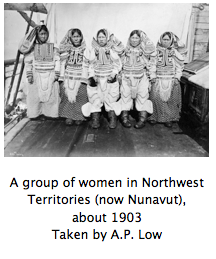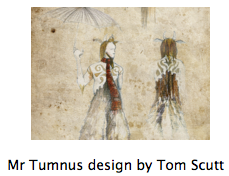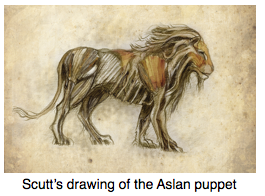When reading a book, the author’s description conjures images in your mind, allowing you to paint the scene and characters in your head with no limitations. The challenge for costume designers is to bring the character to life, capturing their personality, their status and their place within the text. Designing for stage and screen are completely different tasks, each with their own difficulties and constraints. To thoroughly explore how a costume designer for each platform creates their designs, I am using The Lion, The Witch and the Wardrobe as my main reference. There are many reasons for this choice; it is a notable and famous text that has been adapted for stage and screen; set in the 1940’s it has historical references for a designer to use or evolve and the fantasy elements in the book allows for imagination and creativity on how the designer wishes to convey the magical scenes. Further more, this book contains very strong characters that could be portrayed through their clothing. For example, the White Witch is evil, but is described to wear white, which usually represents purity and innocence. Therefore I am interested to discover how a designer conveys evil whilst keeping the clothing white. Also, Aslan the lion is an animal who can be realistically recreated in animation for film, but I aim to find out how a designer for stage portrays his character.
C.S. Lewis’ The Lion, the Witch and the Wardrobe tells the story of the four Pevensie children that were evacuated to the country during the Second World War. The youngest of the children, Lucy, finds a huge wooden wardrobe in the house that she decides to enter finding herself in a snowy forest, later discovering that this was Narnia.
The children discover that the White Witch, who believes she rules Narnia, wants to kill them. In a huge battle against the Witch’s army and the great lion Aslan, good conquers evil and the children take their place as the true kings and queens of Narnia until they stumble back through the wardrobe into the real world to find that they are children again.
With the luxury of budget and CGI, Isis Mussenden was approached by producers to create the costumes for the film. Mussenden was able to give an adult’s view of the characters, as she had not read the books previously, meaning that her interpretation of the characters was new, so she could create something that was true to what C.S. Lewis had written, not something that had evolved to something very personal over the years.
To begin the process, she analysed each character, asking questions like who they are and how they got there. Mussenden describes that after meeting the actors, this became easier as there was a physical body that she could build a character on top of. She then says that sketching, weaving fabric and dyeing it was the next stage to see what worked, and what didn’t.
Referring back to the book often, Mussenden stayed very close to the anticipated and expected theme of “ice” when designing for the White Witch. Due to the everlasting winter in Narnia that the witch sentenced the country to, it was an obvious path to take for Mussenden to research stalactites. This then lead to her collecting images of cracking glaciers and ice, the broken shards and pointed edges creating the evil, cold personality of the witch. As this is an international film that millions of people would be watching, Mussenden had to make the costumes relatable to the book and those familiar with C.S. Lewis’ portrayal of her.
For the silhouette of the White Witch, she visited museums, paintings, mythological drawings, anatomy studies and constantly referred back to the book for inspiration. The final garment portrays a powerful, strong ruler, with the floor length dress and sculptural neckline.
To subtly reference the witch’s fall from power, Mussenden shows her “transformation”, something that wasn’t mentioned in the book. The White Witch begins to lose her powers when Aslan returns, therefore she is shown as melting away her ice crown and wears warmer colours and furs. Mussenden wanted to show the witch as having “evolved clothing rather than changed them”.
The research done for the children’s costumes was very thorough, even more so than the witch’s as they had to be historically correct and authentic. To make sure she achieved this, she interviewed WW2 evacuees, visited the Victoria and Albert Museum’s collection for overcoats and other fashions, and commissioned vintage weavers to create the fabrics for the garments to be made from.
As she was designing for film, Mussenden could create pieces that were heavy (for example the witch’s dress), or that were uncomfortable to wear as the actors would only be wearing the costumes for short periods of time and would be given breaks. This meant that the only consideration needed when creating these costumes is that the actor needs to move and be able to act without hindrance.
Film and stage are very different; there is a huge contrast into what there is to consider. For stage there is the practicality of the costumes, if the actors can move, if they can change quickly into other costumes and how their costumes should enhance their performance, not hinder it with big face coverings or masks muffling their voices so that you can’t hear them.
Similarly to Isis Mussenden, Tom Scutt (the costume designer for the ThreeSixty’s production of “The Lion, the Witch, and the Wardrobe) had never read the books as a child, but knew of their stories. However, instead of creating an expected and familiar take on the costumes, Scutt used other sources of inspiration to make his costumes unique.
Working with ThreeSixty productions meant that he also had the considerations of height and movement, due to the production taking place in a tall tent with a circular stage that has circles within it turning. This created a circus theme, which gave him the scope to design costumes that could be suspended from the ceiling, that incorporates stilts and that could have acrobatic movements performed in them.
Taking all of these considerations into account, Scutt created beautiful costumes that originated from very different places to Mussenden. He chose to recreate the close community of Narnia in another form; therefore he chose a tribal, Inuit inspired theme.
On analysis, the Inuit are a logical choice. Their fur and heavily padded bodies create a sloping silhouette, rounded and soft, just like the animals in the book. Furthermore, I believe that Scutt was inspired the by the practicalities of living in the everlasting icy winter that rages through Narnia. The Inuit tribe would live in these conditions every day and therefore have created the perfect garments to protect them from the weather.
As the wardrobe is the entrance to Narnia from the real world, it plays a very important part, something that Scutt wanted to capture. The origin of the wardrobe is from a tree from Narnia which would bare magic apples. To reflect this in the play, Scutt designed the Aslan puppet to be made from bark and his mane to be made from leaves. Unlike in the film where animation took care of creating a realistic depiction of Aslan, Scutt harnessed the fact that even with puppetry, a lion is a difficult subject to capture, therefore, he made Aslan even more magical and fantastical.
This essay has given me the opportunity to gain knowledge of how I would approach my own costume designs and how I would develop the research aspects of the process. I now see the difference between stage and film, and the compromises you have to make for each. I believe that for a film, you should be quite accurate to the book, taking reference to how the author portrayed the characters, but still allowing yourself to be creative and original. However, for a play, you can be a lot freer with designs and create something that is your own interpretation of the text. Whether it is stage or screen, adapting a text into something real and tangible is a process that requires you to be very in depth and thorough with research. When producing costumes, designers must find inspiration and make reference to the historical and cultural side of the text that they are working on, making their designs authentic and believable, even if they are fantasy pieces.




